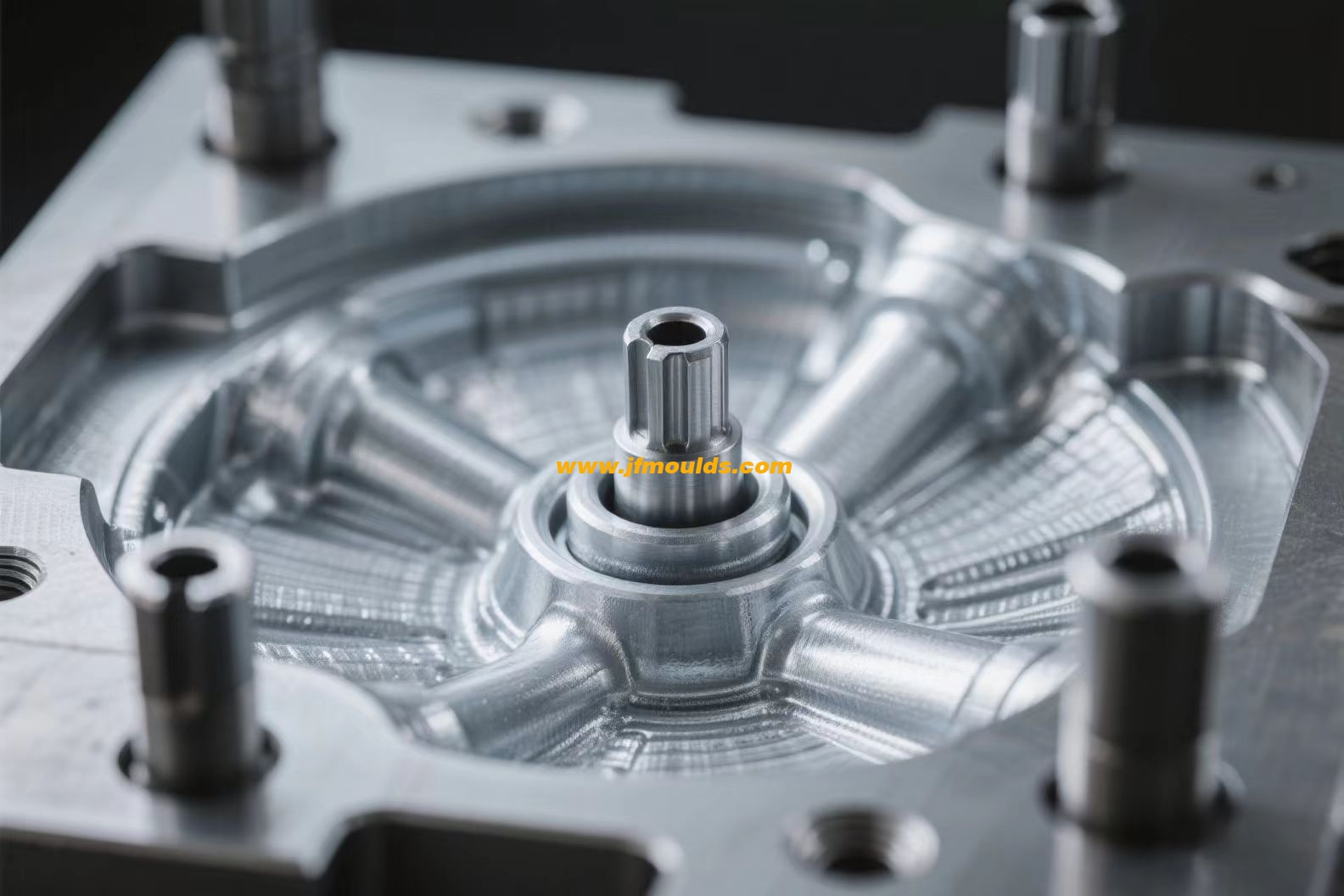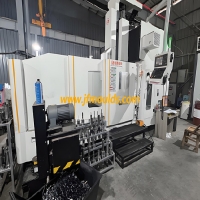Tecnología de puerta de moho de inyección
Tecnología de puerta de moho de inyección
Sistema de activación
Molde Co.,Ltd. de Taizhou Jiefeng del coche (jfmoulds.com)
Al diseñar moldes, la selección de la posición de la puerta y la forma de puerta juega un papel decisivo en la economía de la producción de moldeo por inyección.
1.1 El sistema de activación para conectar piezas moldeadas por inyección
1.1.1 corredor frío
Para los moldes de corredores fríos, tanto la parte moldeada por inyección como la puerta se enfrían dentro del molde y se expulsan simultáneamente en cada ciclo de moldeo.
El punto clave del diseño del corredor frío es garantizar un llenado uniforme de todas las cavidades de moho. Por lo tanto, solo cuando las distancias de todas las cavidades al punto de entrada del pegamento central son iguales, se puede garantizar que el proceso de llenado sea uniforme.
Si el área de sección transversal de la varilla de alimentación (también conocida como el brazo del corredor) es demasiado pequeño, se requerirá una presión de inyección muy alta para el llenado de la parte moldeada por inyección. La alta presión de inyección puede causar estrés interno, lo que lleva al agrietamiento del producto.
Una vez que la presión de inyección es demasiado alta, la presión dentro de la cavidad también aumentará. Si el subsidio de fuerza de sujeción de la máquina de moldeo por inyección es insuficiente, la parte moldeada por inyección se expandirá.
El área transversal del canal de desvío puede considerarse como una función del peso del producto, y su valor de referencia se deriva de la experiencia práctica.
El diámetro del corredor debe ser al menos no menos que el espesor máximo de la pared de la parte moldeada por inyección.

Molde Co.,Ltd. de Taizhou Jiefeng de Mould_Taizhou de la materia (jfmoulds.com)
1.1.2 Runner de moho de tres placas
La ventaja del molde de tres platos es que la parte moldeada por inyección y el corredor se pueden sacar de dos superficies de separación diferentes. Esto reduce un paso adicional, a saber, separar la puerta de la parte moldeada por inyección.
El molde de tres tableros puede llenar productos a través de una o más aberturas. Esto significa que hay una mayor libertad en el diseño en comparación con los moldes de dos platos. El sistema de vertido de moho de tres placas se realiza mediante puertas de puntos rompibles.
Cuando se abre el molde, la varilla de dibujo o el gancho de dibujo se inyectan con el molde fija el corredor en el molde fijo. Entonces, la boquilla fue sacada del producto. Hay un mecanismo similar a un pasador de eyector en el lado del molde fijo para expulsar el canal de flujo. Una ventaja del molde de tres placas es que el espacio entre las cavidades puede ser muy compacto.
Cabe señalar que el área de sección transversal del canal dividido debe coincidir con el peso del producto, y el canal dividido debe equilibrarse. Dado que se deben abrir dos superficies de separación, una de las superficies se puede retrasar en la apertura, por ejemplo.
Si es posible, espere hasta que el núcleo salga de la parte moldeada por inyección o el núcleo de hilo se hunda y se desmolte antes de abrirlo.
La apertura de las tres placas, a saber, la plantilla, la placa media y la placa del eyector, se basa principalmente en la máquina de moldeo por inyección. El bloqueo lateral o la barra de tiros determina el trazo. Los cilindros neumáticos o hidráulicos también se usan con frecuencia para abrir el formulario. Su ventaja es que las posiciones de apertura de cada placa se pueden controlar por tiempo.
Las varillas de corredores a menudo causan mal funcionamiento de la producción. Para eliminarlos suavemente de las antiguas partes defectuosas del molde, deben usarse
Manipulador de la cabeza que toma de material. Después de la programación, la mano mecánica puede enviar directamente la cabeza del material a la trituradora.
1.2 El sistema de activación retenido en el molde
1.2.1 Canal de flujo adiabático
Un molde para retener el sistema de activación, con un área de sección transversal relativamente gruesa del canal de flujo, puede mantener el canal de flujo del núcleo (tubería aislante)
El estado fundido del plástico en el molde del sistema de activación de retención; Otro tipo es el sistema de corredor caliente que requiere calefacción eléctrica.
Los moldes de una sola cavidad inyectan productos directamente a través de un corredor principal, cavidad predepositada o puerta calentada. Un molde de múltiples cavidades requiere un sistema de activación.
Early molds only used cold runners. Later, a large-capacity gating system formed on the second formwork was added. These channels (also known as "skeletons") remain in the mold. Only thick channels can be insulated, and such molds are called insulated channel molds.
When the mold malfunctions or the material and color are changed, the second template is opened and the runner is removed.
Adiabatic channels are often used for high-speed injection molded parts. The molding cycle of different systems does not exceed 15 seconds.
Typical applications include yogurt cartons, threaded bottle caps, disposable tableware, disposable syringes, pens and planting POTS.
1.2.2 Hot runner
(1) Advantages of hot runners
Hot runner is theoretically an extension of the injection molding unit. It should keep the plastic in the mold cavity in a molten state, guide and heat the molten plastic until it reaches the cavity, while maintaining very little temperature and pressure loss. The hot runner meets the aforementioned requirements.
The greatest advantage of hot runner technology is that there is no waste during the injection molding process and the quality of the injection port is good. There will be no phenomenon of material head sticking together when opening the mold during the production process.
Another advantage is that it is convenient to select the gate position for balanced filling of injection molded parts. Feeding from the center of the bottom of the product is balanced filling, which is suitable for all cylindrical products, such as cups, buckets or similar products.
When the depth of the injection molded part is irregular, all the surfaces of the product can be projected onto a plane, and then another one can be drawn
A circle that accommodates all product areas. If the glue is injected at the center of the circle, it can ensure the balanced filling of the injection molded part.
Eliminating the intermittent runner channels on the parting surface enables the application of brand-new ideas in mold design. The mold can become more compact and the number of cavities can be significantly increased. Molds with 128 or more cavities are not uncommon.
(2) Internal heating type hot runner
Internal heating hot runner molds represent the rise of hot runner technology, but they are rarely used nowadays. One drawback of the internal heating system is that the process of changing colors or materials is very complicated.
The original concept of hot runner technology started from the adiabatic runner concept and developed an internal heat diversion and intake system to prevent plastic solidification in the mold runner. Therefore, the heating system is installed at the center of the diversion channel.
High-temperature raw materials will not overflow from the solidified cold material
It is an important condition for the system's sealing performance. More serious defects will occur during color and material changes. Streaks will appear on injection molded parts because the raw material particles will degrade on the surface of the insulation layer. To avoid these problems, every time the color or material is changed, the entire system needs to be disassembled to remove the raw materials in the distribution pipeline, which is a rather complex process.
The heating system is installed at the center of the flow channel. As a heating element
The simple heating jacket regulates the temperature with the help of sensors. The heating sleeves are almost all self-insulating, so the heat transferred to the mold is very little. This ensures that the thermal expansion is very small, thereby enhancing the sealing capacity of the mold.
Internal heating systems should be given priority for processing semi-crystalline thermoplastics, such as polyethylene (PE), polypropylene (PP), or polyamide(PA).
(3) External heating type hot runner
In the external hot runner, heat is transferred from the outside of the mold to the distributor plate. At this point, the molten plastic in the diversion channel does not come into contact with the heating element.
Wind the heating coil
Most heating elements adopt preformed wound heating coils. First, process grooves on both sides of the diverter plate, then insert the wound heating ring into the grooves, and finally seal it with two-component thermal conductive adhesive. Sometimes, the heating ring is only covered with a thin iron plate. Winding the heating ring can make the heat in the gating system evenly distributed.
Cylindrical heating jacket
As an alternative solution, a simple heating sleeve can be used near the flow channel holes on the split plate. The processing of these holes needs to achieve the best dimensional fit with the heating sleeve to ensure smooth heat transfer.
Simple heating sleeves are usually used in combination with thermal conductive adhesive to ensure good heat conduction and make the replacement of simple heating sleeves more convenient. At present, heating jackets are only used for simple molds.
Información relacionada
Una guía completa para moldes de inyección: desde lo básico hasta las aplicaciones
2025-07-11
Una guía completa para los moldes de inyección: desde lo básico hasta las aplicaciones...
Proceso de procesamiento de diseño de fabricación de moldes
2025-06-19
El flujo del proceso de 1. fabricación de moldes es el siguiente: revisión de dibujo-material...
De los avances tecnológicos a la transformación inteligente
2025-07-07
De los avances tecnológicos a la transformación inteligente...
Moldes de inyección: el "gen industrial" escondido detrás de todo
2025-07-12
Moldes de inyección: el "gen industrial" escondido detrás de todo cuando nuestro fing...
Tecnología de puerta de moho de inyección
2025-07-23
Inyection Mold Gate Technologygating Systemauto Mould_taizhou Jiefeng Mold Co., ...
Molde de inyección: el "Creador invisible" en el taller
2025-07-09
Molde de inyección: El "Creador invisible" en el workshopI. La primera impresión de la...





